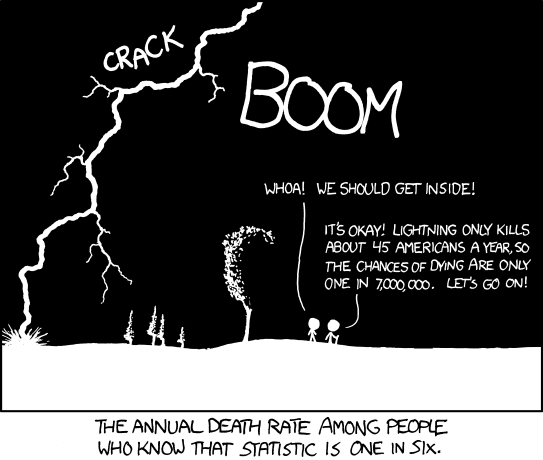The total number of incidents, even over a defined period of time, is meaningless by itself. There is no absolute scale for danger. What we really want to know is how dangerous one thing is relative to another, with the second being something familiar that we have some intuitive sense about.
Let's say you had absolutely accurate statistics that there were 100 crimes on the Red Trail. So what? Is that high, low, normal? You can't tell from this alone whether you should consider it dangerous to take the Red Trail.
The Blue Trail had only 50 crimes. But does that make it safer? Is the same time period being compared? How many people went on each trail? How long did they stay on each trail?
What was the nature of the crimes? If 10 of the crimes on the Blue Trail where stabbings, but 97 out of 100 on the Red Trail were theft of unattended items, does that change your mind which trail you'd rather take?
Even if you knew all these things, that still doesn't put either trail in perspective so that you can relate its safety with ordinary circumstances. In roughly April of 2017, there were 61 shootings in New York City. Does that mean you're safer on the Red Trail than walking the streets of NYC? Maybe, but you need a lot more info to draw any conclusions. How many of these shootings were on the street of people walking around? You plan on doing only day hikes on the Red Trail. How many of the 100 crimes were during the day? How many of the NYC shootings were during the day? It's really hard to get a apples to apples comparison.
Also beware of anecdotal evidence. People tend to remember and report unusual incidents more than the ordinary. Your cousin's friend's sister tells of this creepy-looking guy following her on the Red Trail. However, there were probably far more creepy-looking guys going the same way as her last time she walked around NYC. She doesn't tell stories of those since people going the same way walking behind you in NYC is a expected occurrence.
In neither of these cases anything bad actually happened. So not only is there strong reporting bias, it's not clear there is anything to report. The one creepy-looking guy on the Red Trail might have just been there by random chance with no ill intent. However, two of the many people that happened to be walking behind her in NYC might have been thinking how to maneuver themselves to snatch her purse, but didn't get a chance to pull it off.
Basically, without a lot of detailed information, most of these statistics mean very little. And, those details are either just not available, or would be a huge amount of work to gather.
If you like hiking, go hiking. Take the usual basic precautions, but don't obsess about them to the point it detracts from your hiking unless you have specific actionable information. Realize that specific actionable information is very rare.
